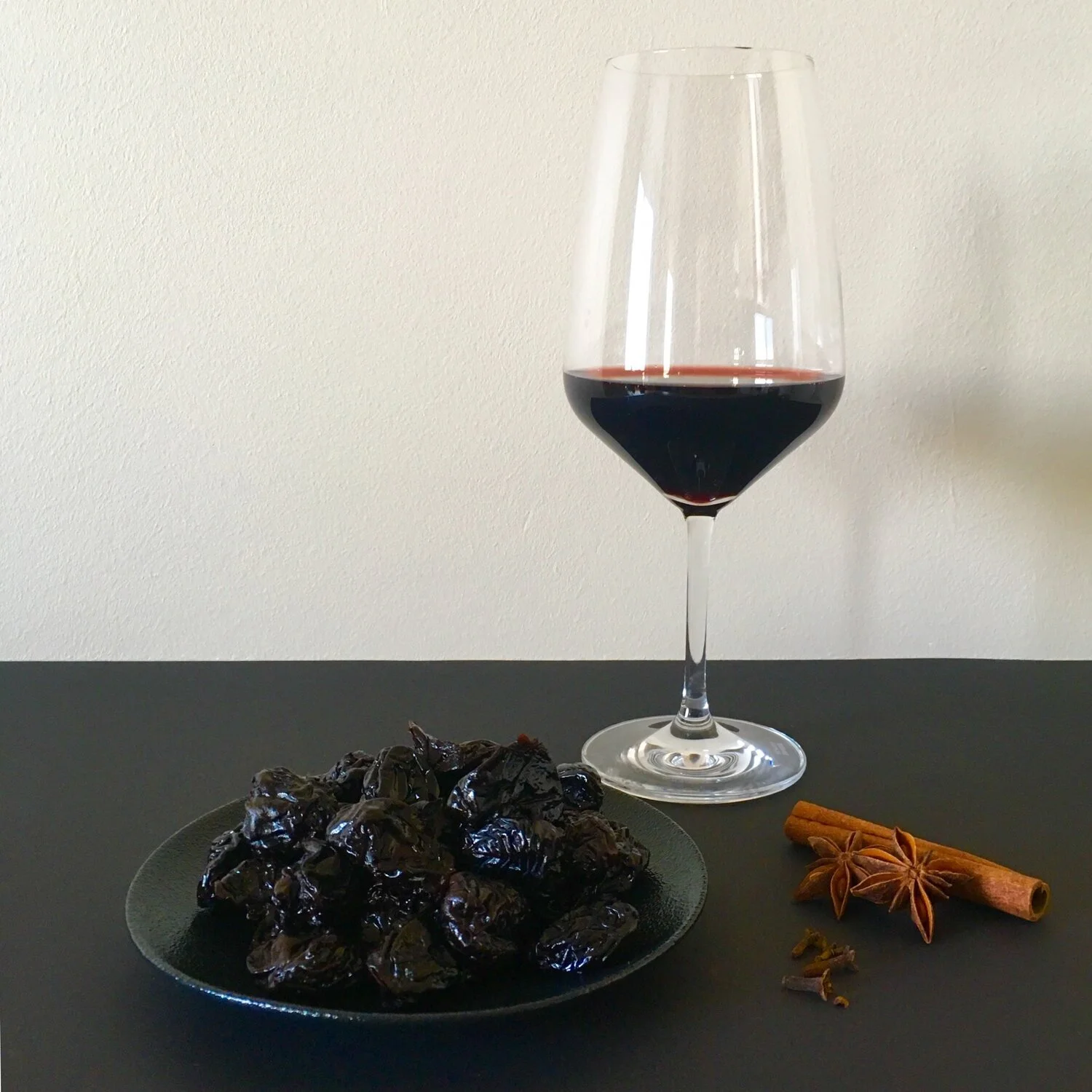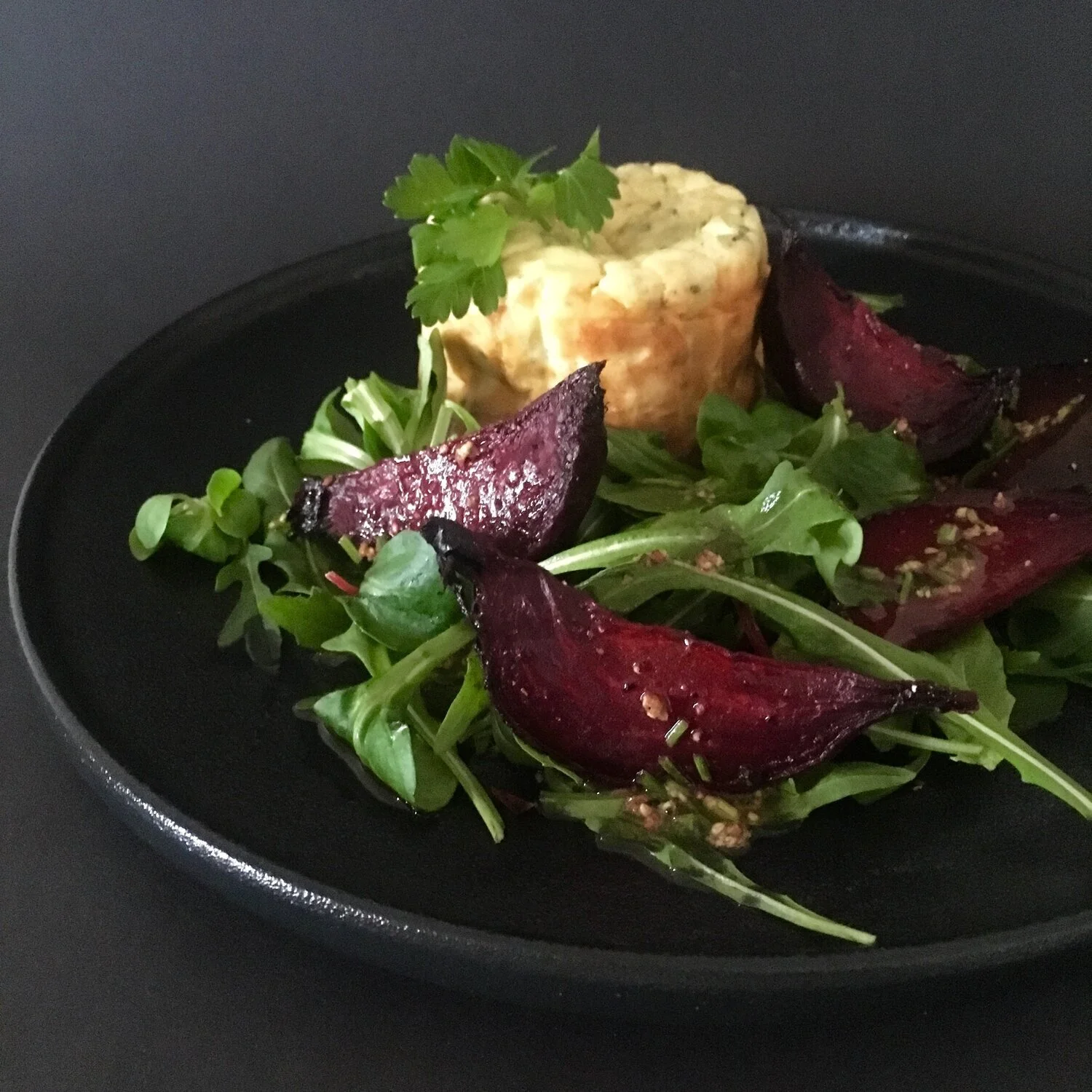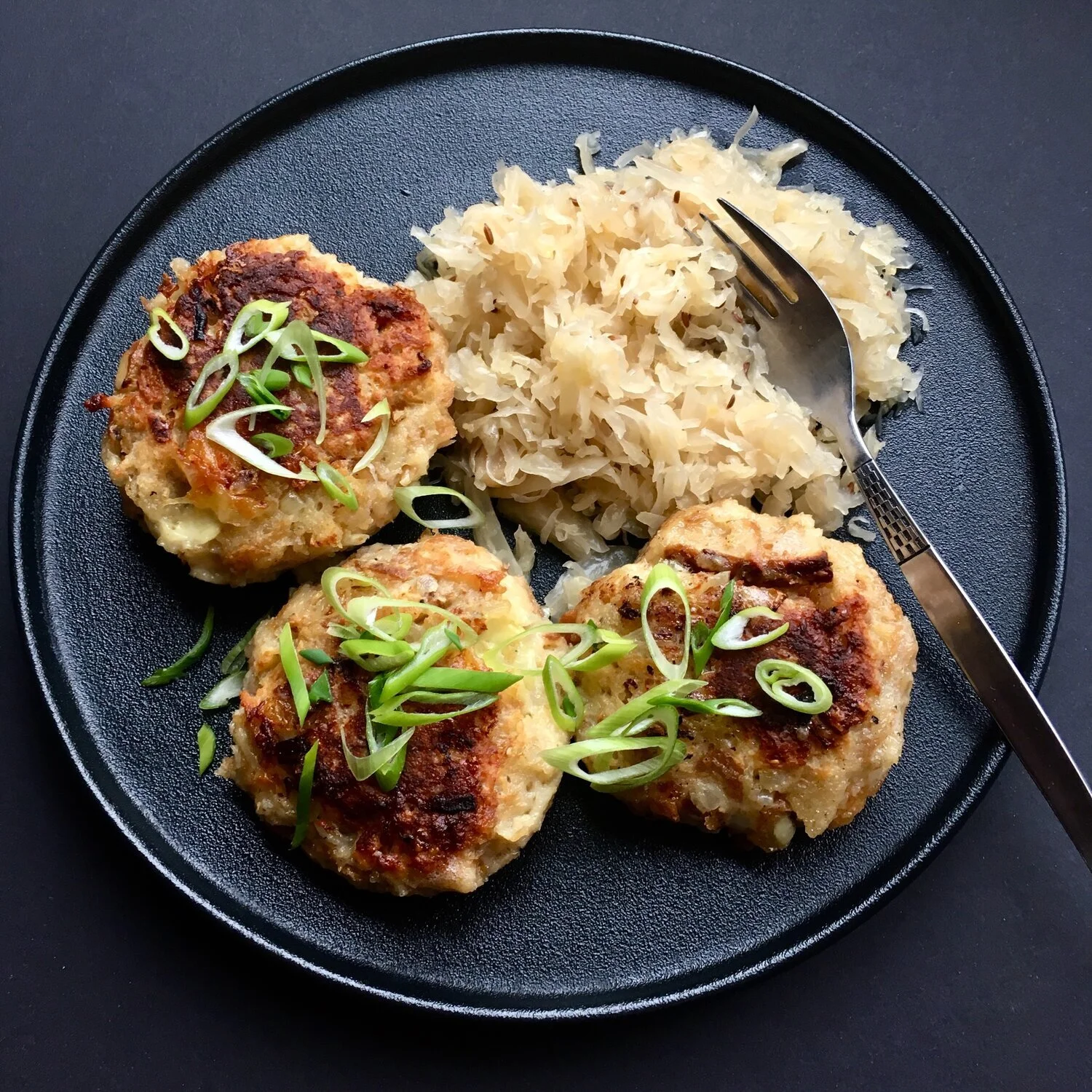Prune butter
When food activists talk food waste they mostly seem to put their focus on bread and produce which undeniably makes up the majority of foodstuffs ending up in the bin. What I feel is often neglected are dry goods. Sure, we are all aware that legumes, rice, pasta and many other provisions keep for a lot longer than the best before date recommends. And we aren’t repelled to use them even if that has been exceeded by a couple of years or so. However there are dry goods that start to look uninspiring and so they get thrown. One example is dried fruit and vegetables. Once they have lost the residual moisture they become unappealing to most of us. An opened bag of currants for intance gets thoughtlessly tossed in the rubbish. Which is a shame because they can be easily brought back to life by adding a bit of moisture. Soak them for half an hour and they can be added to chutneys, a salad or muesli. It’s that simple!
Going through my larder I found a jar filled with a handful of prunes which have been sitting in a jar for too long. And I procrastinated deciding what I would like to do with them. Up to the point where I found myself silly procrastinating over something as mundane as some hard prunes in a jar. Don’t we all stand in our way from time to time, being indecisive over the most banal things?
Eventually I had an epiphany to turn them into a luscious spread, cooking them with spices, red wine and port, then puréeing them and mixing with butter. I have gotten the idea from one of my favourite cookbooks. It’s “Good to the grain” by Kim Boyce, which mainly consists of multigrain recipes making use of unusual flours such as teff, buckwheat and coconut, but also spelt and wholegrain wheat. There is a section at the end for preserves, compote and jams which are building blocks for her recipes. One of them is a divine fig butter. It used dried black mission figs, which were really difficult to get and I got a friend from the US to bring them over on a visit. When I made the fig butter I offered a friend a spoonful to try. She can be quite a fussy eater, so it was an accolade to say the least when got quiet, stretched out her forearm towards me to show me her goosebumps and uttered an orgasmic moan. I should start a collection of people’s different ways of paying tribute to an unforgetable culinary experience.
What works with dried figs will surely work as well with prunes (even though prunes might not possess the same aphrodisiac quality as a fig). I adapted the Kim Boyce’s recipe and added a bit more red wine, because I had a little less port.
I had a little less port and added some orange juice to make up for the missing liquid. Depending on how dry your prunes are, you might need a little bit more liquid, so feel free to add some more wine, orange juice or water to reach a spreadable consistency.
Kim Boyce gave the recipe for the fig butter as a buidling block for buckwheat scones, which I have tried as well. You can also use this on toast, as a filling for Linzer cookies or whereever a recipie asks for jam. However the mixture is so delicious on its own, it is good enough to just eat a spoonful whenever you pass by the jar. Goose bumps guaranteed!
Prune butter
350 g dried prunes (I used prune d'Agen)
70 g raw cane sugar
2 whole cloves
1 star anise
1/4 teaspoon cinnamon
250 ml red wine
125 ml port
120 g softened butter
1. Put 60 ml of water and the sugar in a small heavy-bottomed saucepan. Add the cloves and star anise. Bring the mixture to a boil over medium flame and cook for 7-10 minutes until the syrup is a light-golden colour.
2. Add the red wine, port, figs and cinnamon. Stand back when you do this as the mixture is very hot and could spit. The syrup might harden, since you are adding cooler ingredients to the pan, but it will gradually dissolve as you continue cooking. Cotinue cooking for a couple more minutes until the caramel and alcohol has blended. Reduce the temperature to low and continue cooking for 30 minutes, giving it a stir from time to time. When the liquid has reduced to about half the original quantity, remove from the hear and let cool to room temperature.
3. Remove the star anise and cloves from the cool mixture. Pour the mixture into a food processor and purée until smooth. Alternatively you can do this with a hand-held blender if you don't own a food processor. Add the softened butter and continue mixing until fully incorporated.




